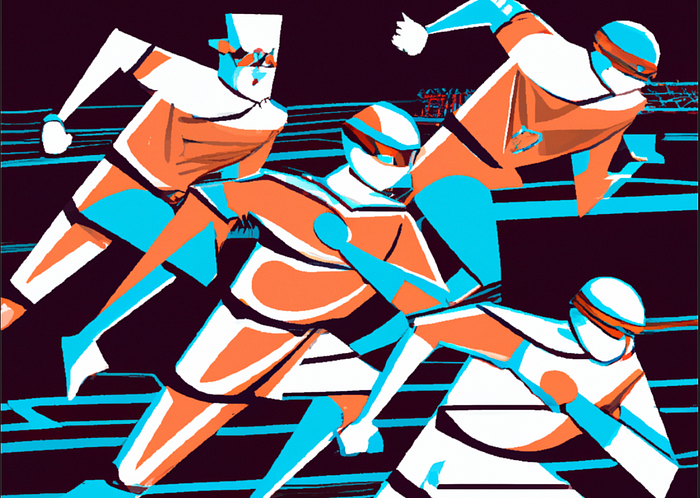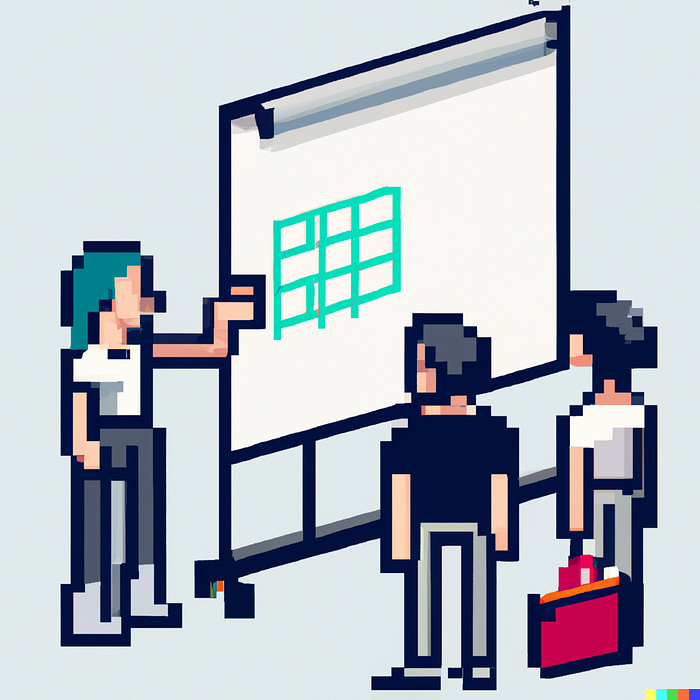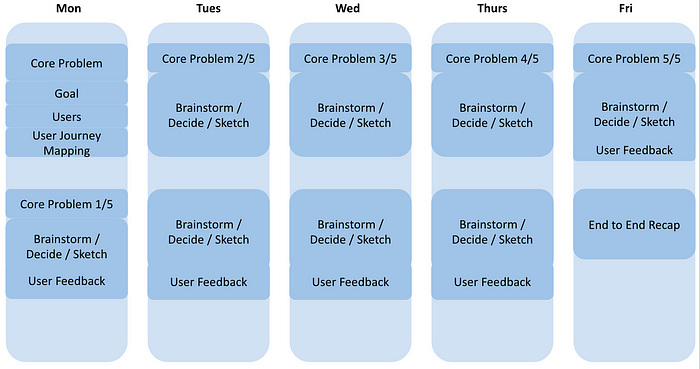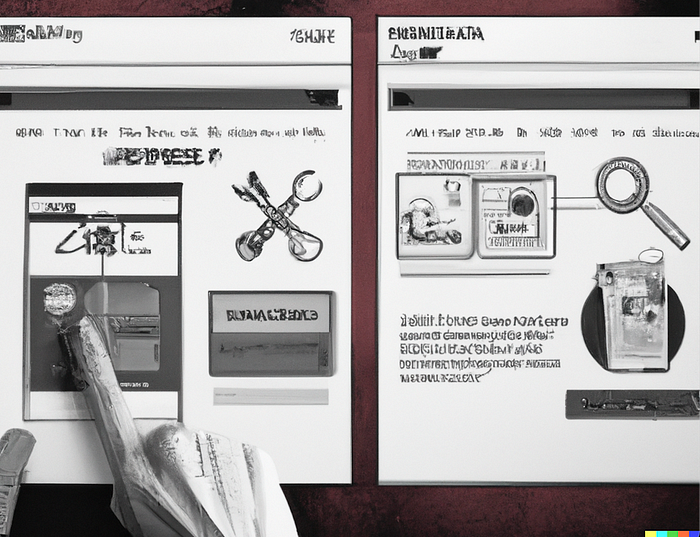
As our product team, consisting of software engineers, UX designer, and PM, stepped inside the war room to start our first Sprint day, I can see that some of us were nervous at the challenge at hand. We have a tight timeline to deliver a product that solves an important problem for our business. Not only is there more technical and design complexity than originally expected, but more importantly, we are not sure how our users will react to the new experience. Ambiguous, high stakes, and not enough time. It was a great opportunity to run a Sprint.
Many of us may be familiar with sprints in an agile and scrum context, but the technique that I am referring to is Google Venture’s (GV) Sprint. In GV’s own words, “The sprint is a five-day process for answering critical business questions through design, prototyping, and testing ideas with customers. Developed at GV, it’s a “greatest hits’’ of business strategy, innovation, behavior science, design thinking, and more — packaged into a battle-tested process that any team can use.” In my mind, this translates to an ideation and validation technique that is done at lightning speed, which reminds me of past hackathon days. I love the spirit behind moving fast while being creative to solve tough problems.
After running this recent Sprint, I thought it would be helpful to share my experience and learnings to convince you of the usefulness of this technique so that you may add this to your product toolbelt and solve one of your big problems.
Before running the sprint, it is important to plan out who you want to recruit to the team, when you are running the sprint, and where it will take place. Now, I have a tendency to overplan to avoid unwanted surprises. But when approaching sprints, I would advise against spending too much time planning because over preparation can have diminishing returns especially since the nature of problem solving is fluid and unexpected turns can happen.

Here are the logistics that you need to plan out in order to run a successful sprint:
Once you have figured out these 3 pieces, you have a solid foundation to run an effective Sprint.
As mentioned earlier, the Sprint is a 5 day process and the GV design team who founded the technique provided a high-level structure for what to do each day.

They have also mentioned that this structure is flexible and I found success tailoring the 5 days to fit my challenge’s unique situation and my work style. There are a few differences between GV’s proposed Sprint structure and mine.
Taking these differences, this is what my Sprint looked like compared to GV’s.

The point here is that the structure of your Sprint is less important than how you execute. At its core, the Sprint is a compacted solution discovery technique, so you can take your own experiences and tailor the Sprint based on your team dynamics and the challenge.
Now, the book did a great job laying out a high-level framework for how to run a Sprint, but I also took away learnings as a PM that may help you make your Sprint more successful.
Stay Grounded in the Why
Work Backwards from the User
There is also advice in approaching product design tradeoffs that I wanted to share, but that content is worth another post in itself.
At the end of the 5 day Sprint, our team came up with the final design for the new user experience as well as the technical implementation plan. Of course, we still had details to iron out and plenty of development, testing , and go to market work, but we came out with a solid game plan with far less ambiguity.

Fellow PMs who have led Sprints, feel free to comment and share your experiences. If you are interested in trying a Sprint and learning more, check out the GV team’s Sprint book here. See you next time and go build something that matters!
P.S. If you have not yet tried DALL-E, do not miss out. The digital images created by this tech is mindblowing. You can find some of DALL-E’s images here in this post.
Find out if MentorCruise is a good fit for you – fast, free, and no pressure.
Tell us about your goals
See how mentorship compares to other options
Preview your first month
